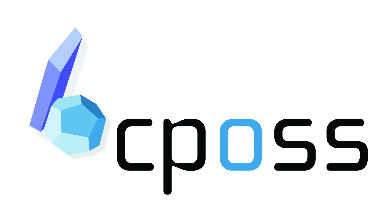Control and Prediction of the Organic Solid State
DMACRYS
Version 2.3.0 of DMACRYS/NEIGHCRYS is now available.
- Descriptions of DMACRYS
- Generation of Crystal Energy Landscapes
- References
- How to obtain the software packages
- System requirements (Owners list of approved equipment)
- Training and support
- Citations
DMACRYS - Energy minimisation package to simulate rigid molecules with multipoles
This package models crystals of rigid molecules, allowing lattice energy minimisation and the calculation of second derivative properties. It is designed to use anisotropic atom-atom model intermolecular potentials, particularly distributed multipole electrostatic models. The programs require the input of crystal structures, either experimental or separately generated by a computational search program, and the distributed multipoles generated from an ab initio package.
DMACRYS2.3.0 is the current version of the program, currently being used and supported at UCL with further developments by Dr M Leslie, Prof S L Price, and Dr M Habgood. DMACRYS is capable of working with large input cells and state-of-the-art anisotropic model intermolecular potentials, thanks to enhancements by Dr P G Karamertazanis, Dr G W A Welch and Dr M Habgood.
Generation of Crystal Energy Landscapes (Crystal Structure Prediction)
In addition to NEIGHCRYS and DMACRYS, you will need the following programmes to generate crystal energy landscapes:
- A programme to generate trial crystal structures. We use
- MOLPAK
- CrystalPredictor
- A programme to generate the isolated molecular structure and its charge density. We use
- GAUSSIAN
- A programme to extract the distributed multipoles from the charge density. We use
- GDMA
You might also want the CCDC software for viewing crystal structures that your calculations have produced.
For an overview of how the above programmes are used at UCL, and how they interact with one another, please see our interplay diagram. It also contains links to various external websites, from where you can obtain the programmes.
References to DMACRYS
This program has been used extensively in theoretical studies of the organic solid state, but the main reference, which should be included in all publications arising from the use of this program is:
How to obtain the software
DMACRYS is supplied to individuals under UK academic licences, which are free of cost to bona fide UK academic scientists pursuing scientific research of a non-commercial nature. Licenses are also available for overseas academics and commercial organizations at a charge. Please visit https://xip.uclb.com/i/software/DMACRYS.html for further details of the licenses available.
Training and support
A brief outline of a lattice energy minimization workflow is available. This will give you some idea of the requirements for use of DMACRYS.
You can download the manuals for these programs here, but we would recommend that you contact the group to arrange training.
We will endeavour to resolve any problems that are brought to our attention. If you encounter a problem, please check the list of known limitations. If it is not listed there, please email DMACRYS Support.
We thank Tim Parkinson of the Software Sustainability Institute for his work in developing version control and the test-suite harness.
|
List of registered users (resticted to project members) |
Notes on subversion control (restricted to project members) |
Enter secure pages (For project members only - password required)
© UCL Chemistry Department 2004. This page was last updated on 4 July, 2019. If you have any problems with this page please email the WebMaster
